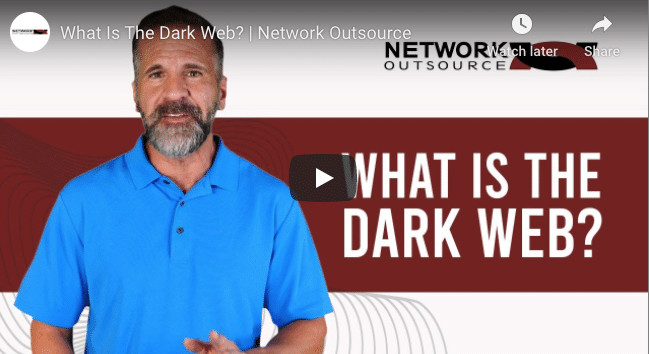Are Your Passwords On The Internet?
When your systems get hacked, the stolen data will most likely be posted for sale on the dark web. There’s no limit as to what bad cyber actors can sell here — even your passwords could be up for grabs by the highest bidder.
There is an emerging crop of cyberattackers who hack corporate networks, steal crucial credentials, and sell them to other parties. Where do they advertise and trade their ‘merchandise’? On the dark web. This makes it difficult for regular surfers to trace or spot them using ordinary search engines. To better safeguard your organization, you must familiarize yourself with the dark web’s threats and how to manage them.
Here’s a short video to get you started:
What Is the Dark Web?
What we usually refer to as “the internet” (message boards, websites, and marketplaces) is just a fraction of the World Wide Web. Beneath this surface web is a vast hidden cyber underworld that cannot be indexed by regular search tools like Yahoo or Google. It’s this part that’s known as the dark web/darknet.
Are Your Passwords on the Dark Web for Anyone to See?
Like in the open web, the darknet also has the Darknet Marketplaces (DNMs) — the epicenters of illegal business activities. Among the most sought-after goods in the DNMs are passwords and other login credentials. In any case, anyone who has your passcodes can access all of your data, and by extension, those of your users and clientele.
Before the FBI took down Silk Road, it had grown into a one-stop DNM for pirated software, stolen passwords, codebases, and many other illegals. Several years after its demise, cybersecurity stakeholders face even more significant challenges from other emerging darknet marketplaces.
Is Your Data on the Dark Web? Most of the time, passwords and other data are advertised on the darknet for weeks or months before they finally attract interested customers. If you have secure access to the dark web, you could be privy to these developments and act accordingly.
However, it would be risky to manually navigate the darknet to check if your credentials have been posted for sale. Unless you have the requisite expertise, doing so could expose your organization’s systems to more threats. The dark web is chaotic and erratic. Besides, most DNMs keep rewriting their IP addresses so that tracing them is almost impossible.
What Can You Do to Protect Your Data from the Dark Web?
- Install Dark Web Monitoring and Response Software: These tools check any information posted on the darknet for similarity with your company’s data. In case of a match, you are appraised immediately so that you can take the necessary action.
- Conduct a Dark Web Scan: Your IT team should regularly assess the dark web for any company-related data. If any similarities are identified, say matching passwords, you should work with the service provider to work out the best way out.
- Assess Your Network: This is similar to a dark web scan, only that it’s inward-facing. Here, the focus is on evaluating your systems and endpoints for any backdoors or threats already within.
Most importantly, your networks and sensitive data are as safe as your service provider’s expertise and experience. Network Outsource is the leading information technology consulting company in NYC and Long Island. Schedule A Call With Us Now, and let’s discuss how to safeguard your systems from the darknet.





